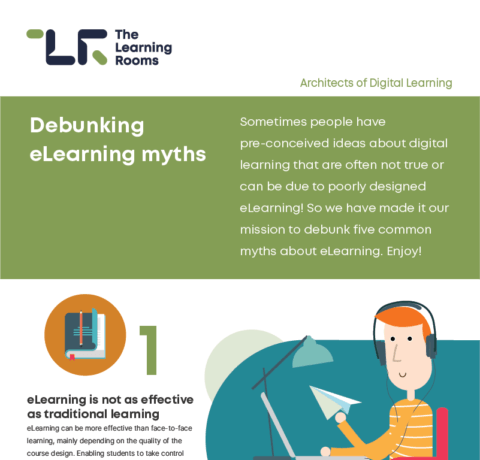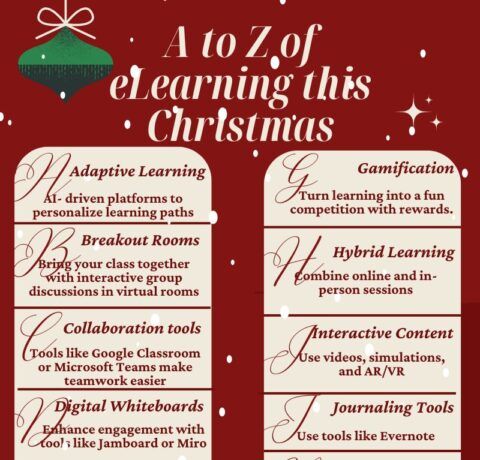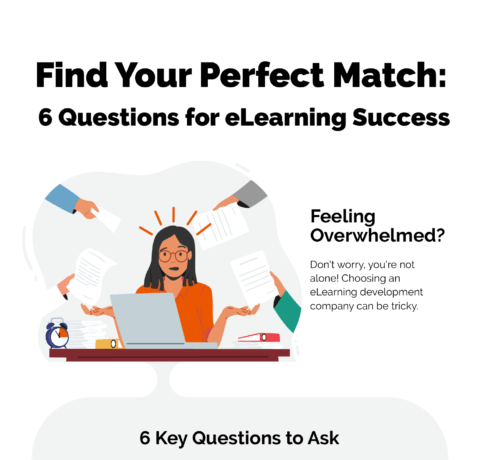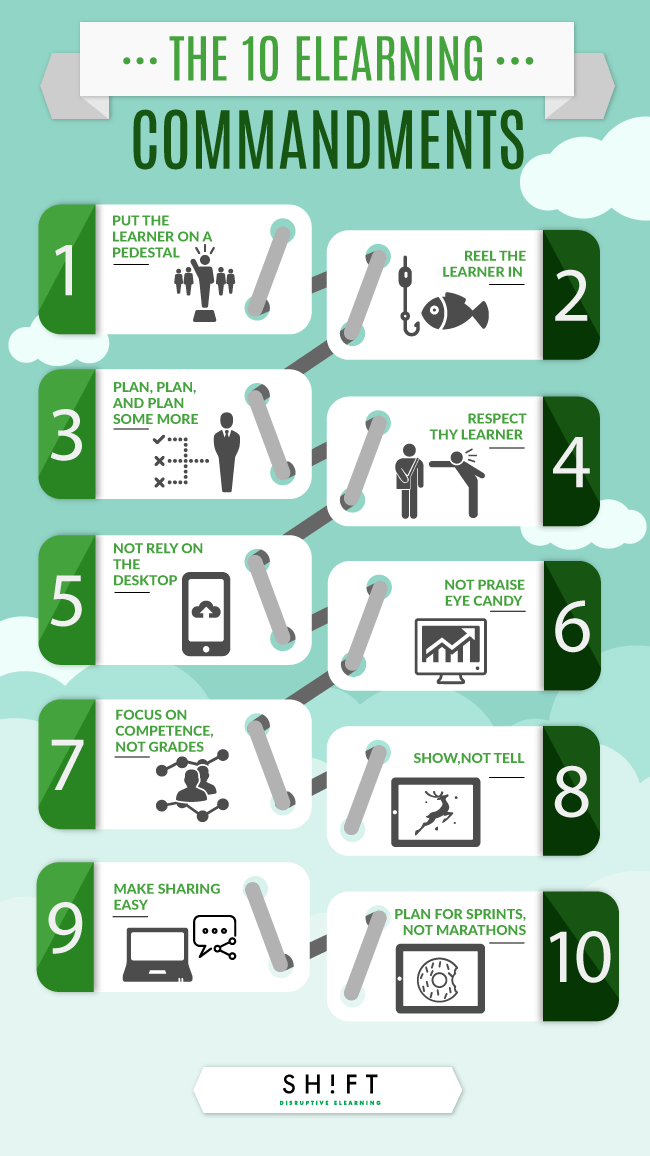The Ten eLearning Commandments Infographic
Here are the 10 eLearning commandments professionals must follow to see their courses be a success. Take these rules, incorporate them into your eLearning, and get busy mastering your craft.
1. Put the Learner On a Pedestal
Ensure that your learner feels in control and well-oriented. The learner has to know what, why, and where learning is taking place. Make sure the learner experience is put first and foremost. This means communicability, aesthetics, and navigability are the primary concern (after of course, the learning material).
2. Reel the Learner In
Sorry to use a weird analogy, but think of your learner as a fish. You’ve got to provide some juicy bait for them to bite onto. You have to come up with a way to hook the learner in, and get them engaged early on.
3. Plan, Plan, and Plan Some More
When you storyboard effectively, you reduce the chances of your client being unhappy, increase the efficiency of the project, and give yourself a better blueprint for the building process. It’s absolutely vital, and often overlooked by many eLearning developers who are concerned with ‘getting it done’ as fast as possible. Don’t be one of them.
4. Respect Thy Learner
You’ve got to respect your learner’s intelligence and respond to their needs. Make sure you understand their background, how they like to learn, and what style of learning appeals to them. One more point – remember to have the training delivered when appropriate.
5. Do Not Rely On The Desktop
In today’s multi-screen world, it’s easy to think of learning in different platforms, with desktops, tablets, and smartphones each with different compatibilities and operating systems. eLearning has to change. It has to be responsive, multi-format, and look good on whatever device it’s used on.
6. Do Not Praise Eye Candy
eLearning is a practice of restraint and balance. Remember to use useful design, not decoration, and give breathing room. Just like in photography, negative space can sometimes make all the difference; there’s no need to fill every little space.
7. Focus on Competence, Not Grades
Competency-based learning lets learners move through a course at their own pace. This is a more valuable approach; the focus isn’t on completing a training program within a specific time, it’s about doing it slow, and doing it right.
8. Show, Not Tell.
If you want your audience to remember your content, you need to show, not tell. This means you should tell more stories in your course, give examples, create scenarios, you have to give the audience something they can relate to, and help them find connections between the learning content and their roles.
9. Make Sharing Easy
eLearning has to be more sociable, not just formal. Develop your trainer’s toolbox and add in some collaboration features, even a billboard, an online message board, or a wiki. Try new things to get your learners not only to engage and retain information, but to share it with one another and fill in each other’s gaps.
10. Plan for Sprints, Not marathons.
Learners have too much going on already – if you bombard them with information they’re going to tune out quickly. They might retain scraps, a key word here and there, or they might retain nothing. Don’t risk it. Organize your content into small, bite-sized ‘sprints’.







You can adjust your cookie preferences here.